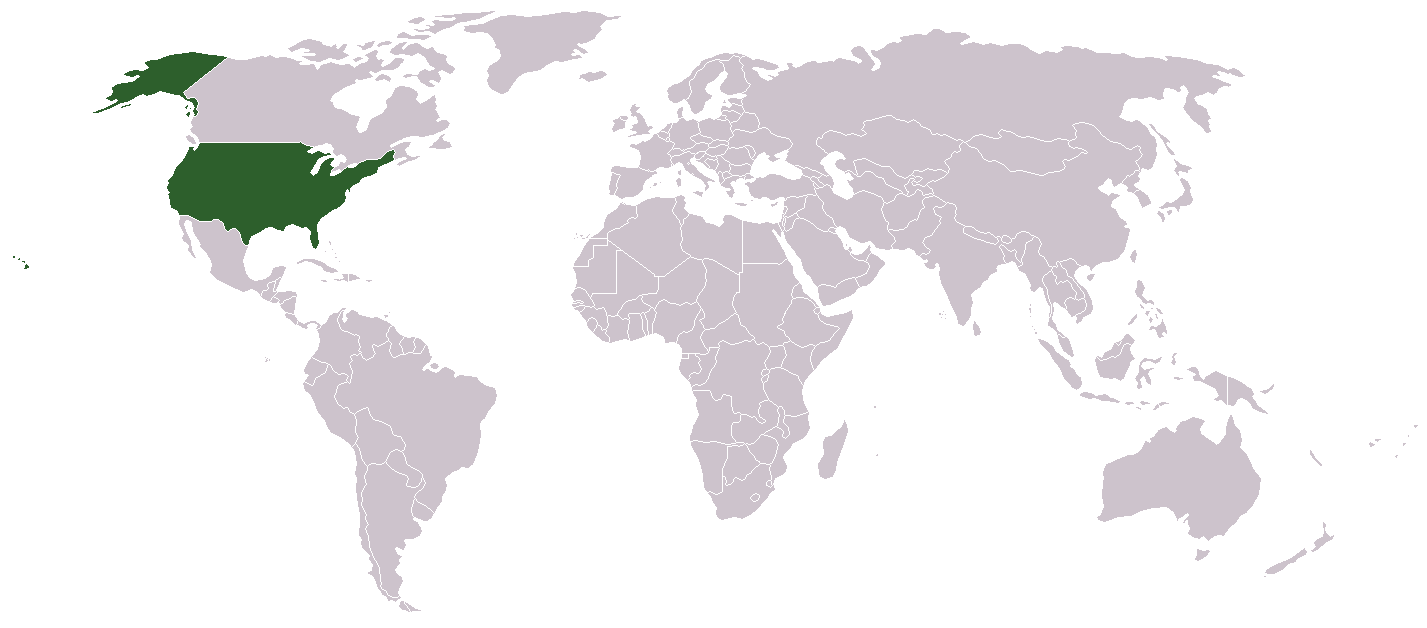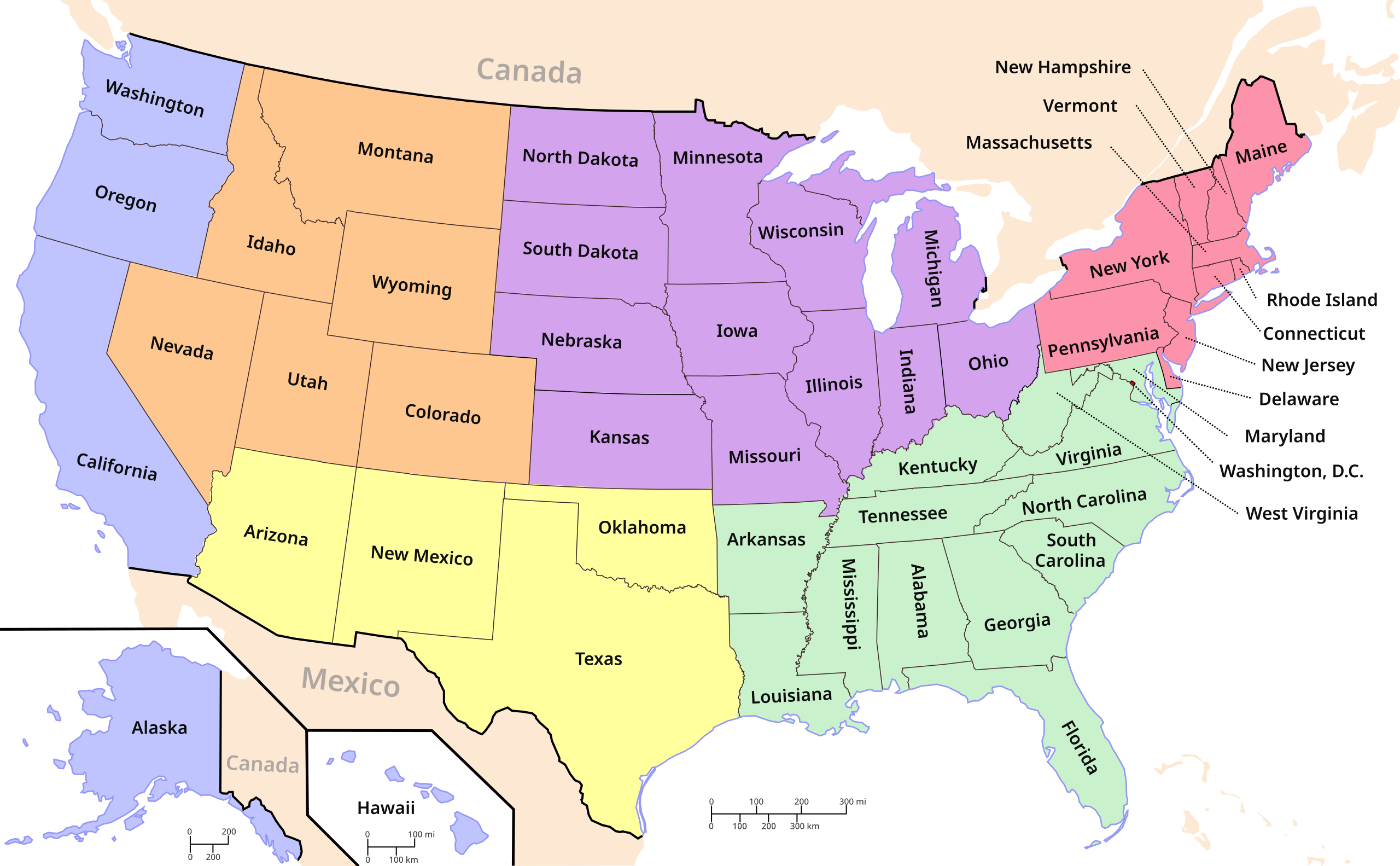United States: Difference between revisions
Skizmophonic (talk | contribs) (Redirected page to US) Tag: New redirect |
Skizmophonic (talk | contribs) No edit summary |
||
| (8 intermediate revisions by the same user not shown) | |||
| Line 1: | Line 1: | ||
[[Category:Countries]] | |||
The United States, located primarily in North America, is a diverse nation known for its cultural influence and significant global presence. Founded in 1776, it emerged as a republic based on democratic principles, emphasizing individual liberties and civil rights. The country comprises 50 states, each with its own unique culture and landscape, ranging from bustling urban centers to vast rural expanses. The U.S. economy is one of the largest in the world, characterized by innovation and entrepreneurship. With a multicultural population, the United States serves as a melting pot of ideas, traditions, and perspectives, shaping its identity on both national and international stages. | |||
<center> | |||
<gallery widths=400px heights=400px> | |||
File:United States (World Map).png|World Map | |||
File:USA States Map - Educational.svg.png|Country Map | |||
File:Flag of the United States (DoS ECA Color Standard).svg.png|Flag | |||
</gallery> | |||
</center> | |||
=HISTORY IN VIETNAM= | |||
The United States' involvement in the [[Vietnam War]] marked a significant and contentious period in American history, driven by Cold War dynamics and the desire to contain communism. The roots of the conflict can be traced to the end of World War II, when [[Vietnam]] sought independence from French colonial rule. As the U.S. supported the anti-communist government in [[South Vietnam]], tensions escalated, particularly as the [[North Vietnam]], led by Ho Chi Minh, sought to unify the country under a communist regime. | |||
The turning point came in 1964 with the Gulf of Tonkin incident, where alleged attacks on U.S. naval vessels prompted Congress to pass the Gulf of Tonkin Resolution. This allowed President Lyndon B. Johnson to increase military involvement without a formal declaration of war. Over the following years, U.S. troop levels surged, peaking at about 550,000 in 1969. Military strategies relied heavily on air power and ground operations against the [[Việt Cộng]] and North Vietnamese forces, including extensive bombing campaigns. | |||
The war sparked widespread protests and opposition within the United States, leading to a deep societal divide. Many Americans questioned the morality and effectiveness of the U.S. involvement, culminating in a significant anti-war movement. As the conflict dragged on and casualties mounted, public sentiment turned increasingly against the war, leading to a gradual withdrawal of U.S. forces and the eventual fall of [[Saigon]] in 1975. The Vietnam War had lasting impacts on U.S. foreign policy, military strategy, and American society, shaping perceptions of government and military involvement in international conflicts. | |||
<br>[ SOURCE] | |||
<hr> | |||
<gallery mode="packed" heights="400px"> | |||
File: | |||
</gallery> | |||
<hr> | |||
{{#evt: | |||
service=youtube | |||
|id= | |||
|alignment=inline | |||
|description= | |||
}} | |||
Latest revision as of 08:25, 5 November 2024
The United States, located primarily in North America, is a diverse nation known for its cultural influence and significant global presence. Founded in 1776, it emerged as a republic based on democratic principles, emphasizing individual liberties and civil rights. The country comprises 50 states, each with its own unique culture and landscape, ranging from bustling urban centers to vast rural expanses. The U.S. economy is one of the largest in the world, characterized by innovation and entrepreneurship. With a multicultural population, the United States serves as a melting pot of ideas, traditions, and perspectives, shaping its identity on both national and international stages.
HISTORY IN VIETNAM
The United States' involvement in the Vietnam War marked a significant and contentious period in American history, driven by Cold War dynamics and the desire to contain communism. The roots of the conflict can be traced to the end of World War II, when Vietnam sought independence from French colonial rule. As the U.S. supported the anti-communist government in South Vietnam, tensions escalated, particularly as the North Vietnam, led by Ho Chi Minh, sought to unify the country under a communist regime.
The turning point came in 1964 with the Gulf of Tonkin incident, where alleged attacks on U.S. naval vessels prompted Congress to pass the Gulf of Tonkin Resolution. This allowed President Lyndon B. Johnson to increase military involvement without a formal declaration of war. Over the following years, U.S. troop levels surged, peaking at about 550,000 in 1969. Military strategies relied heavily on air power and ground operations against the Việt Cộng and North Vietnamese forces, including extensive bombing campaigns.
The war sparked widespread protests and opposition within the United States, leading to a deep societal divide. Many Americans questioned the morality and effectiveness of the U.S. involvement, culminating in a significant anti-war movement. As the conflict dragged on and casualties mounted, public sentiment turned increasingly against the war, leading to a gradual withdrawal of U.S. forces and the eventual fall of Saigon in 1975. The Vietnam War had lasting impacts on U.S. foreign policy, military strategy, and American society, shaping perceptions of government and military involvement in international conflicts.
[ SOURCE]


